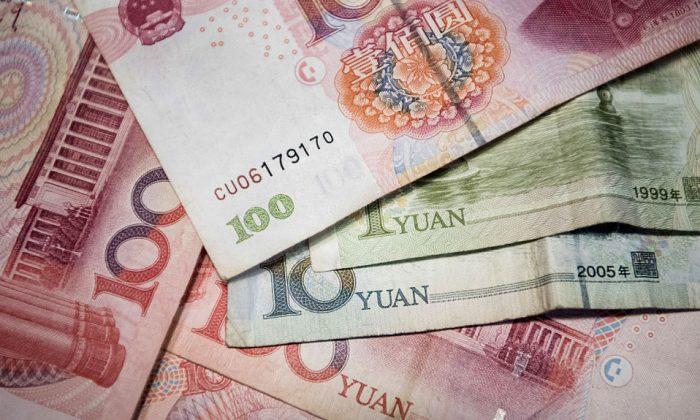BEIJING—China’s politically sensitive yuan sank to a 22-month low against the dollar on Oct. 18 after the U.S. Treasury declined to label Beijing a currency manipulator amid a mounting tariff battle.
The closely watched yuan fell to 6.9411 per dollar at mid-morning, coming its closest to breaking the symbolically significant level of seven to the greenback since December 2016. It recovered slightly in the afternoon.
The yuan, also known as the renminbi, or “people’s money,” has declined by almost 10 percent against the dollar since April as China’s economic growth cooled and U.S. and Chinese interest rates went in opposite directions.
That helps Chinese exporters cope with tariffs of up to 25 percent imposed by U.S. President Donald Trump in a fight over Beijing’s technology policy.
Chinese officials said they would avoid “competitive devaluation” to boost exports. But they have not said how far the yuan might be allowed to fall in response to market forces.
On Oct. 17, the U.S. Treasury’s bi-annual report on currency policy said China failed to meet criteria to be labeled a currency manipulator, a status that can trigger sanctions. But it said Beijing was, along with Japan and Germany, on a list of governments whose currency polices would be closely monitored.
While it helps exporters, a weaker yuan also might encourage an outflow of capital from the world’s second-largest economy. That would raise borrowing costs at a time when communist leaders are trying to shore up cooling growth.
The central bank has been trying to make its exchange rate mechanism more efficient by increasing the role of market forces.
The People’s Bank of China sets the exchange rate each morning and allows it to fluctuate by 2 percent against the dollar during the day in tightly controlled trading. The bank can intervene to buy or sell currency—or order Chinese banks to do so—to dampen price movements.
Most analysts expect the central bank to stop the yuan from crossing the politically sensitive line of seven to the dollar.
Allowing it to fall too far “would run the risk that Trump would brand China a currency manipulator,” said Diana Choyleva of Enodo Economics in a report.
But some say the central bank might allow the market to carry the yuan gradually lower.
Beijing’s “calculation on exchange rate policy is likely to change” if Trump and his Chinese counterpart, Xi Jinping, make no progress at a possible meeting during a November gathering of the Group of 20 major economies, said Julian Evans-Pritchard and Mark Williams of Capital Economics in a report.
The central bank tried to discourage speculation by imposing a requirement in August for traders to post deposits for contracts to buy or sell yuan. That allows trading to continue but raises the cost.
Beijing imposed similar controls in October 2015 after a change in the exchange rate mechanism prompted markets to bet the yuan would fall. The currency temporarily steadied but fell the following year.






Friends Read Free